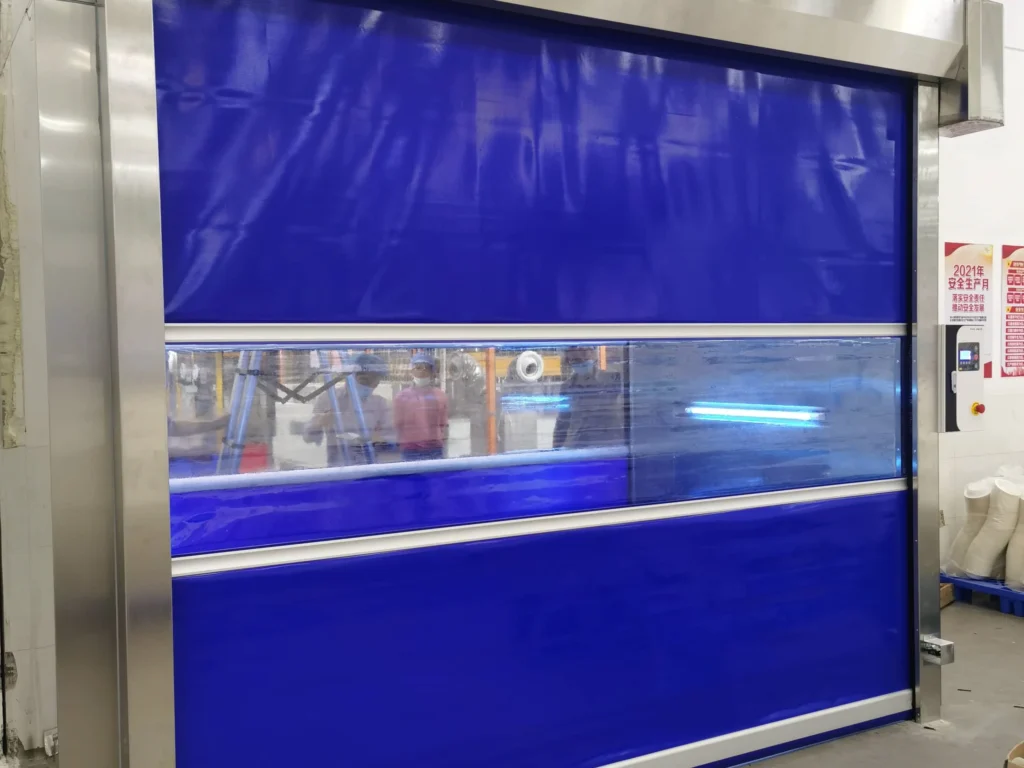Overview
Clean room roll up doors are essential components in modern controlled environments, especially in industries where hygiene, particle control, and space efficiency are critical. Choosing the right roll up door ensures optimal cleanliness, air pressure regulation, and operational efficiency.
This guide provides a comprehensive look at how to select the most suitable clean room roll up doors based on your cleanroom specifications, industry requirements, and performance expectations.
Introduction
In cleanroom environments—such as pharmaceutical plants, semiconductor manufacturing lines, biotech labs, and food processing facilities—every element must contribute to maintaining strict contamination control. While much attention is paid to HVAC systems and wall materials, clean room doors often play a silent but crucial role.
Among these, clean room roll up doors are increasingly favored for their compact design, high-speed operation, and minimal particle generation. But not all roll up doors are created equal—different cleanrooms demand different features.
Key Factors to Consider When Choosing Clean Room Roll Up Doors

1.Air Tightness and Pressure Resistance
Roll up doors used in cleanrooms should support differential pressure control between rooms. High-performance models often include airtight seals and interlock systems to prevent cross-contamination.
2.Material Composition
The materials used must be non-porous, corrosion-resistant, and easy to clean. Common options include:
- PVC or polyurethane curtain doors
- Stainless steel side frames
- Anodized aluminum for lightweight builds
Avoid using materials that may degrade or shed particles over time.
3.Speed of Operation
High-speed opening and closing minimizes air exchange and helps maintain temperature and humidity control. Look for doors with:
- Opening speed ≥ 1.0 m/s
- Soft start/stop motor control for smooth operation
4.Compliance with Cleanroom Standards
Verify that the product complies with international cleanroom classifications such as:
- ISO 14644-1 (e.g., ISO Class 5–8)
- GMP guidelines (for pharmaceutical applications)
Doors should not compromise room classification by shedding particles or failing sealing tests.
5.Automation and Access Control
Integration with sensors, badge systems, and interlocks enhances both efficiency and security. Consider doors with:
- Motion sensors for hands-free entry
- Interlocking systems to control airlocks
- Manual override in case of emergency
Technical Specifications to Look For、
Feature Recommended Spec
Opening Speed 0.8 – 2.0 m/s
Frame Material Stainless steel or anodized aluminum
Curtain Material PU-coated fabric / Antistatic PVC
Cleanroom Class Support ISO Class 5–8
Pressure Resistance ≥ 50 Pa (depends on use case)
Seal Type Full perimeter airtight seal
Automation Optional motion sensors, badge readers
ndustries That Commonly Use Clean Room Roll Up Doors
Clean room roll up doors are found across a variety of sectors that require strict contamination control:
- Pharmaceuticals: For separating sterile and non-sterile areas
- Semiconductor & Electronics: To minimize particle exposure in wafer processing
- Biotechnology: For maintaining bio-barriers and safe zones
- Food & Beverage Processing: In high-hygiene production zones
- Aerospace: Where precision manufacturing requires ultra-clean environments
- Laboratories & Hospitals: To support bio-containment and clean diagnostics
Conclusion
Selecting the right clean room roll up door depends on your operational needs, industry compliance, and environmental conditions. A well-chosen door helps maintain cleanroom integrity, improves operational flow, and enhances safety.
When sourcing a supplier, make sure they can provide custom dimensions, cleanroom certification, and responsive after-sales service.
If you’re looking for a long-term cleanroom solution, investing in high-performance roll up doors is a decision that pays off in efficiency and compliance.

